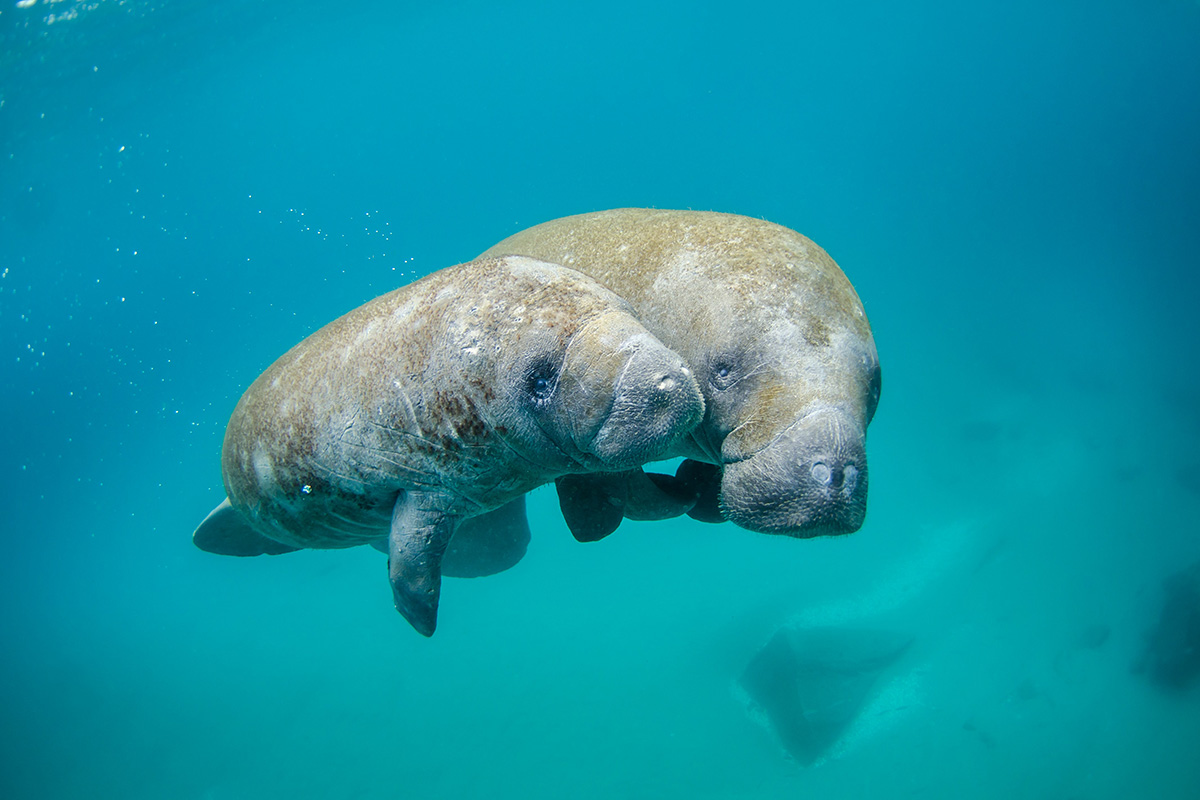EarthTalk®

Florida’s manatees face a host of threats, not the least of which is boat strikes which have killed hundreds of them in the Indian River Lagoon alone this year. Credit: NOAA, Unsplash.
From the Editors of E – The Environmental Magazine
Dear EarthTalk: How are Florida’s manatees faring lately and what has the government and/or conservationists been doing to protect them? — JoAnne B., Sumter, SC
Indeed, Florida’s manatees have come back from where they stood on the brink of extinction in the late 1960s, when only a few hundred individuals remained in the wild. Today over 6,000 of the herbivorous “sea cows” swim the Indian River Lagoon and Florida’s other near-shore waterways. But newer threats including the die-off of their preferred browse (seagrass), habitat destruction due to shoreline development and runoff, an uptick in commercial and recreational activities and global warming have put Florida’s manatees back on the ropes, and conservationists are again ramping up efforts to protect them.
Given all we know about being respectful to wildlife and giving them space, it’s hard to believe that 2021 has been the worst year in recorded history for manatees, with Florida wildlife officials reporting a whopping 1003 manatee deaths in state waters so far this year. That’s a 37 percent increase in manatee deaths over 2020, when biologists recorded 637 kills.
More than half of 2021’s deaths have been in the Indian River Lagoon, a 156-mile east central Florida coastal estuary that stretches across six counties. Manatees have long thrived in the Lagoon’s warm, brackish waters and consumed its abundant seagrass. Over the past 20 years, however, tens of thousands of acres of seagrass have vanished; the University of Florida estimates that up to 95 percent of seagrass is gone from some areas of the Lagoon. The main culprit is runoff from fertilizer and septic systems, which has polluted the water and promoted toxic algae blooms. These blooms deplete the water’s oxygen levels and cloud its surface, decreasing the amount of light available to seagrasses for photosynthesis.
While it is currently illegal in Florida to feed manatees in the wild, conservation groups like Save the Manatee Club are now considering taking matters into their own hands by providing “supplemental feedings” to halt the unprecedented starvations. Meanwhile, rescuing injured or starving manatees remains a top priority of the group, which has helped rescue upwards of 130 manatees in 2021 alone while also funding facilities to rehab injured manatees so they can return to the wild.
Meanwhile, biologists from the University of Florida, University of Central Florida and elsewhere are working to restore water-filtering oyster populations along the Lagoon. These bivalves consume and remove harmful contaminants from the water, nurturing otherwise dwindling seagrass communities that serve as the lifeblood and main nutrient of manatees.
Just four years ago, the U.S. Fish and Wildlife Service (FWS) down-listed the manatee from endangered to threatened. In light of this year’s population plight, Florida Congressmen Vern Buchanan and Darren Soto are currently backing the Manatee Protection Act, which would place the manatee back into endangered status under the Endangered Species Act. An upgraded endangered status would require the FWS to accelerate action on manatee repopulation efforts.
CONTACTS:
Save the Manatee Club, savethemanatee.org
Indian Riverkeeper: Our Waters, theindianriverkeeper.org/our-waters/
Manatee Mortality Event Along The East Coast: 2020-2021, myfwc.com/research/manatee/rescue-mortality-response/ume/
EarthTalk® is produced by Roddy Scheer & Doug Moss for the 501(c)3 nonprofit EarthTalk.
See more at https://emagazine.com
To donate, visit https//earthtalk.org
Send questions to: question@earthtalk.org
